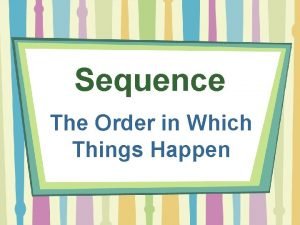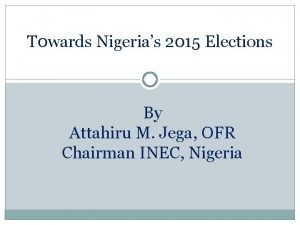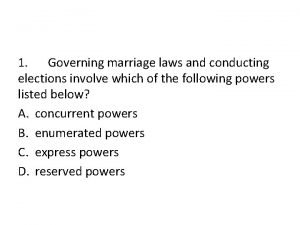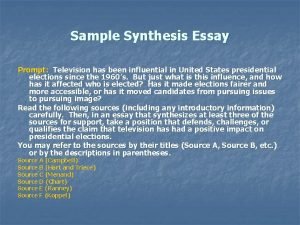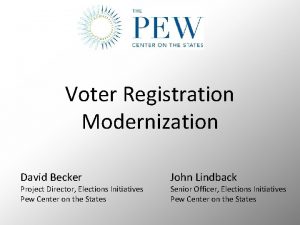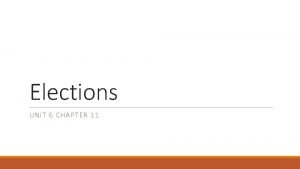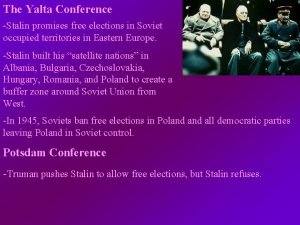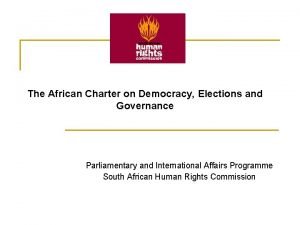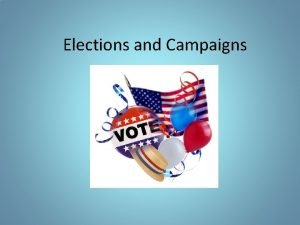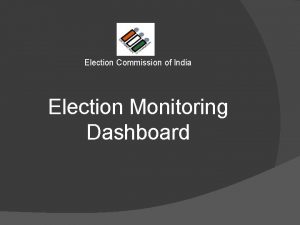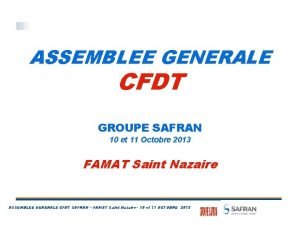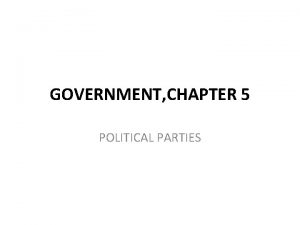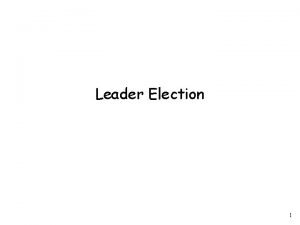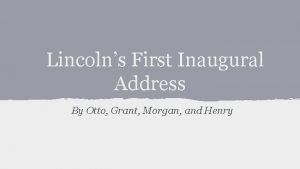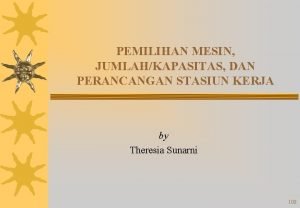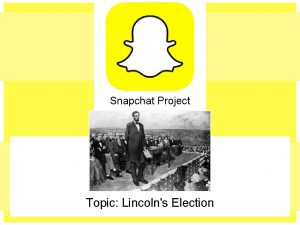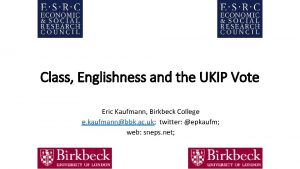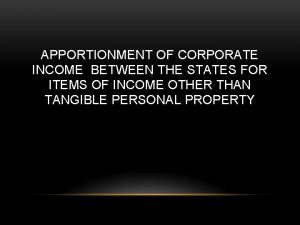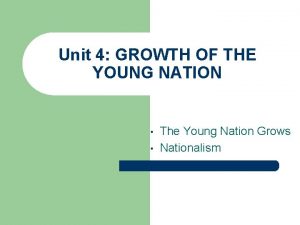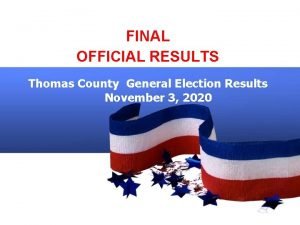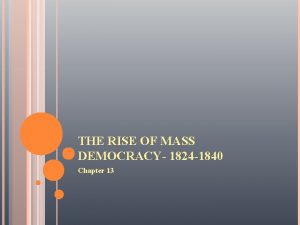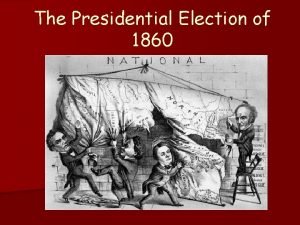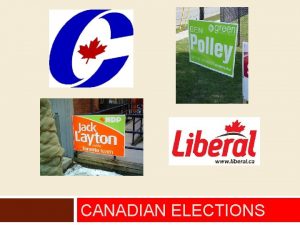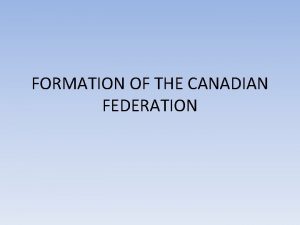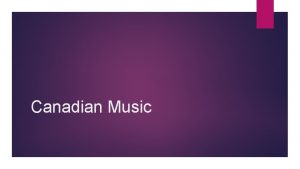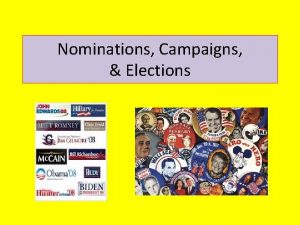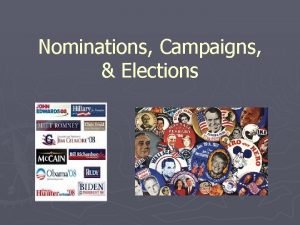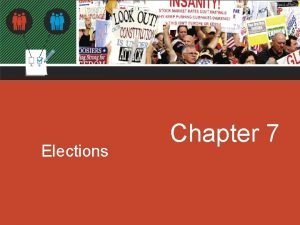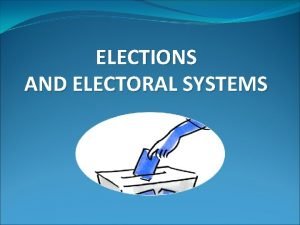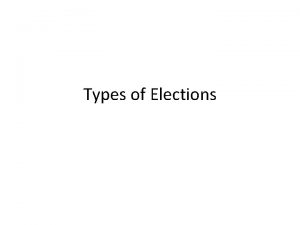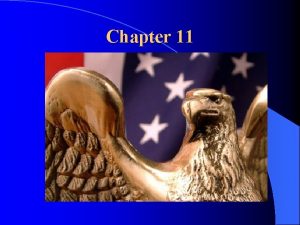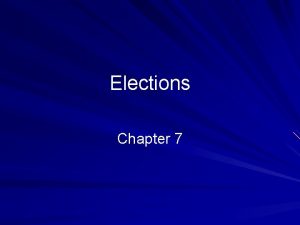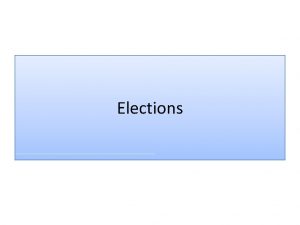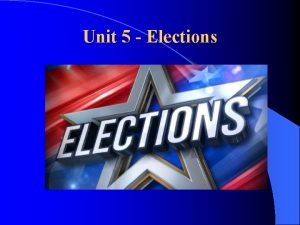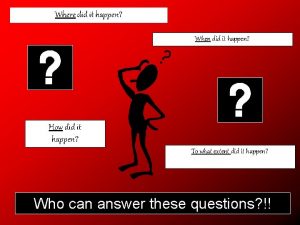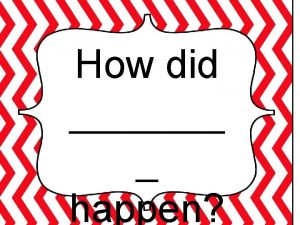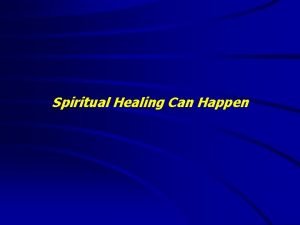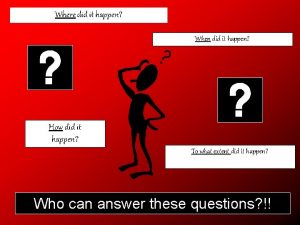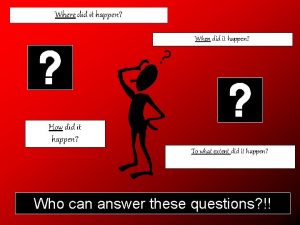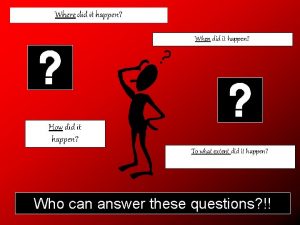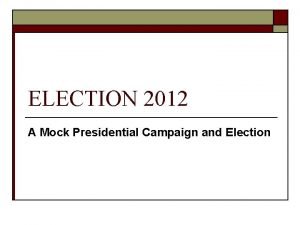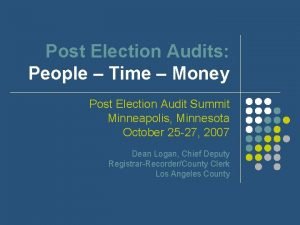CANADIAN ELECTIONS When Do Elections Happen An election


























- Slides: 26

CANADIAN ELECTIONS


When Do Elections Happen? An election must be called every five years or sooner according to the Charter of Rights and Freedoms The Prime Minster may choose to call an election earlier, but a new law (2006) sets fixed elections dates for the second Monday in October, 4 years after previous election An election can be called following a “vote of non-confidence” in a minority government

What Type of Electoral System Do We Have? Single-Member Plurality One person is elected from each riding (electoral district) to become an MP In order to get elected this person must receive the plurality of the votes (the most votes, a majority is not necessary) This system is also known as first past the post There are 338 ridings in Canada


Electoral Districts (Ridings)

Election Process 1) 2) 3) 4) The Call Nominations Voters List Campaign 5) 6) 7) 8) Voters informed Election Day The Count The Winner

Election Process 2) Nominations 1) The Call Prime Minister asks the Governor General to dissolve Parliament and call an election Candidates (usually representing a party) submit nominations and stand for election Chief Electoral Officer Signing Writs

Election Process 3) The Voters List Chief Electoral Officer in each province makes up a voters list of who is eligible to vote 4) The Campaign Each party uses this time to promote their platform Debates, tours, lawn signs, appearances on television, door to door, and lots of promises

The Campaign

On The Election Trail Some events on the election trail, whether that be an unfortunate picture or a controversial comment, can negatively affect the party.

Election Process 5) The Voters There are many different polling stations within each Riding (Electoral District) Eligible voters are informed of where specifically they can vote (e. g. , churches, school)

6) Election Day Voters go to polling stations to vote Each polling station has a returning officer and polling clerks, and may have scrutineers from political parties

Election Process 7) The Count Ballot boxes are collected and votes are counted Each political party may have scrutineers to make sure vote is fair 8) The Winner The candidate with the most votes is elected as MP from that riding (not necessarily by a majority)

How is the Prime Minister Elected? The leader of the party with the most MPs elected becomes Prime Minister We do not vote directly for the Prime Minister The Prime Minister is elected as an MP The Prime Minister will formally take the position after a ceremony involving the Governor General


What Does An Election Cost? Usually around: $375 Million The 2015 Federal Election cost approx. $443 Million

Voter Turnout Traditionally, voter turnout for federal elections is between 60 -70%.

Voter Turnout by Age In the 2015 election, the participation of voters aged 18 -24 increased from 39% in 2011 to 57%. Participation of voters aged 25 -34 increased by to 57% from 45% in 2011. Voters aged 65 -74 have the highest participation rate of all the age groups with 79% (up from 75% in 2011).

Electoral reform? Some have suggested that Canada’s system is broken and needs to be fixed Possible solutions: A. Two-party system instead of multiparty If only 2 parties, would never have a minority Examples: US, Britain, New Zealand, Australia B. Mandatory voting Canada has one of the worst participation rates Example: Australia – 94% because mandatory C. Proportional Representation

What is Proportional Representation? A PR system divides up the 338 seats according to the total percentage of votes each party receives Ie. If a party got 20% of the vote, they would get 20% of the seats. Canadians would vote for a party, not a candidate The party would choose the candidates from their lists to fill the seats


Division of Seats with Single Member Plurality

Division of Seats with Proportional Representations

To consider: Could lead to greater voter turnout because your vote “counts” more BUT: not electing individuals, but parties Would allow smaller parties to be represented (ie. Green Party – would have more seats with PR) BUT – could lead to more minority governments because more smaller parties…

What is a Referendum? a form of direct democracy Voters get to vote on a particular issue instead of the elected representatives deciding Example: Quebec sovereignty vote – 1980 and 1995
 Things in sequence
Things in sequence Conclusion on elections
Conclusion on elections Governing marriage laws and conducting elections
Governing marriage laws and conducting elections Ap lang synthesis essay television presidential elections
Ap lang synthesis essay television presidential elections David becker elections
David becker elections “elections are key to democracy”
“elections are key to democracy” Stalin promise free elections
Stalin promise free elections African charter on democracy, elections and governance
African charter on democracy, elections and governance Presidential elections exploration and announcement
Presidential elections exploration and announcement Election monitoring dashboard
Election monitoring dashboard Vote.election-europe.com/fcpe-safran
Vote.election-europe.com/fcpe-safran Clarity election night reporting
Clarity election night reporting Strip seal in election
Strip seal in election The smallest unit of election administration
The smallest unit of election administration 1796 election
1796 election Win the white house brainpop
Win the white house brainpop Hirschberg-sinclair algorithm
Hirschberg-sinclair algorithm Election of 1860 pie chart
Election of 1860 pie chart Electoral machine
Electoral machine Lincolns election date
Lincolns election date British election study
British election study Arizona multistate service provider election
Arizona multistate service provider election Election of 1824 map
Election of 1824 map Thomas county election results
Thomas county election results George caleb bingham the county election
George caleb bingham the county election Maysville veto
Maysville veto Party platform definition
Party platform definition
